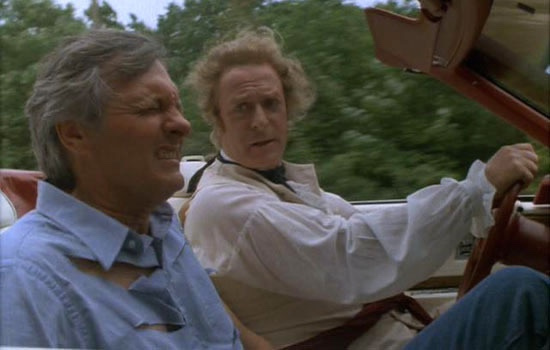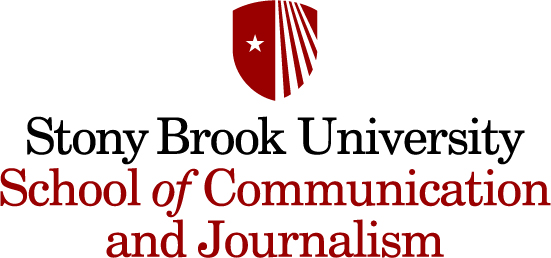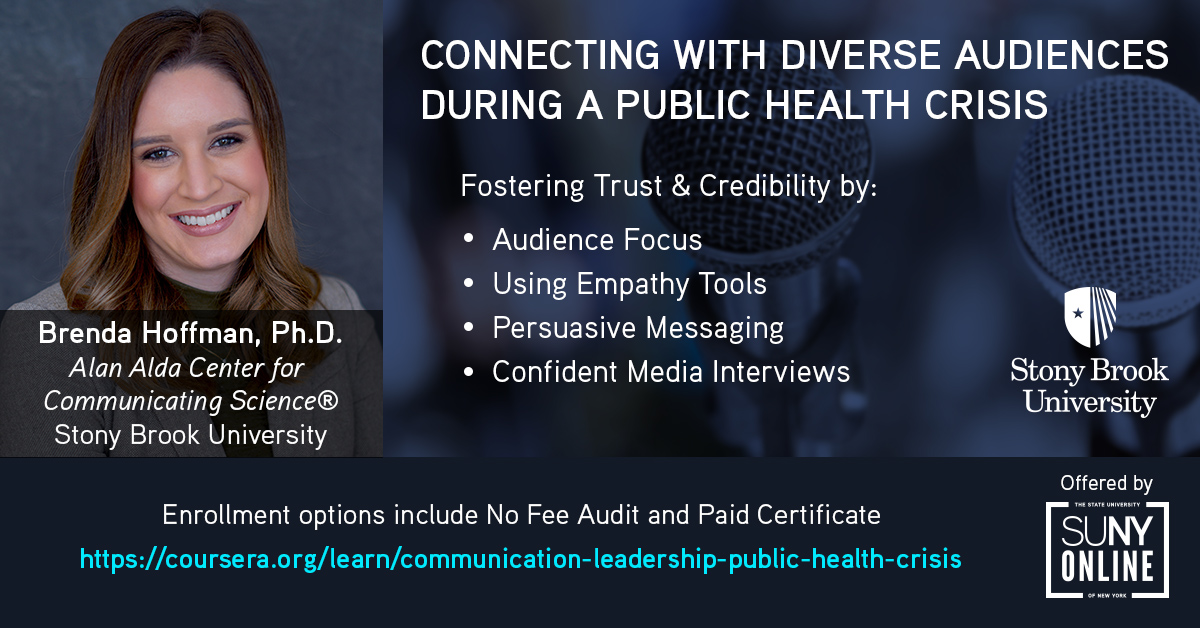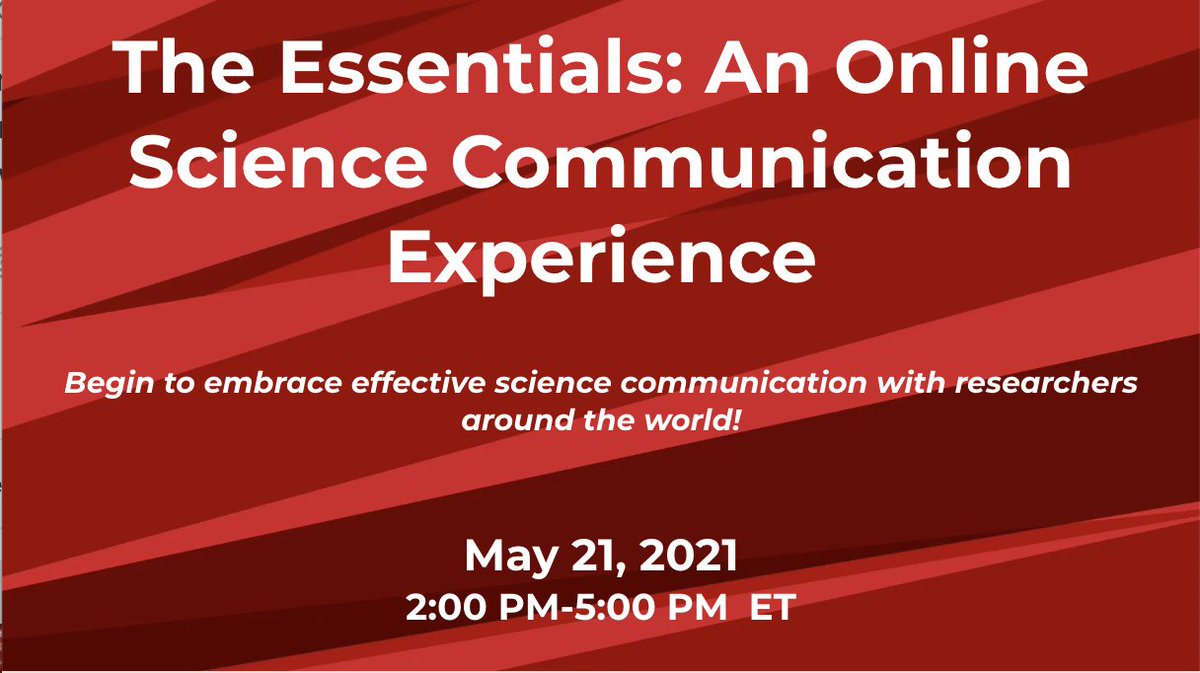Aesthetic Communication In SciComm
The importance of making things visually appealing
The Alda Abstract: Science communication is important and requires new methods and approaches in a society that is being rapidly overtaken by social media and consumerism. One key way to make science stand out in a sea of content is to adapt aesthetic design principles into your science communication strategy. Research shows that people are more likely to engage with direct, aesthetically pleasing content than complex, data-heavy information because a simple preference is hardwired into our physiological makeup from years of evolution and adaptation. Of course, science is a serious endeavor and should never be compromised for the sake of clickbait or analytics. However, many reputable science organizations like National Geographic, PBS’s NOVA, and museums have incorporated aesthetics into their communication strategies for decades, with high levels of success. It is also important to consider accessibility and other cultures’ diversity when incorporating aesthetics into science communication. At the end of this article, we have helpful links to get you started on your aesthetic science communication journey.
You’re a scientist—your research matters.
As scientists, we need to command attention. Public health and welfare suffer when science is not communicated effectively, something this pandemic has shown us ruthlessly again and again.
It has long been a concern of scientists to increase public interest in scientific topics, but herein lies the catch. Since the advent of cable T.V. and the internet, members of the public have become consumers of content daily. Through the general media, ads, and various (sometimes nefarious) forms of social media, the public is bombarded with effective marketing tactics daily. If we are to have any hope of cutting through the noise, we must present them with something that will grab their attention, making them want to look.
How do we do that? We stand out from the competition.
We integrate aesthetic design principles into our science communication strategies. In doing so, we open the door for different types of discussions than those provided solely by academic texts. This is important considering the type of engagement we want from our audiences - since one of modern science communication’s primary goals is not only to place the information in front of people’s eyes but to engage in meaningful dialogue afterward.

The Underlying Theory
Humans react quickly to stimuli and distinguish them from all other inputs we receive. Stimuli that are easy to differentiate and interact with are favored versus complex and demanding alternatives. Since our senses help us survive, it is reasonable to expect that we would adapt to appreciate patterns and cues in our environment that help us quickly make beneficial decisions. This leads us to perceive things that are simple and uncomplicated as beautiful. In other words, we have learned to derive pleasure from aesthetic experiences.
Our neural reward pathways are activated by actions and sensations that cause us joy, and this has significant impacts on the decisions we make each day. People attend art exhibitions and engage in various creative outlets to satisfy the desire for pleasure gleaned from aesthetic experiences. Indeed, the Greek origin of the word aesthetic is aesthesis, denoting the five senses - it was only later in the eighteenth century that the philosopher Baumgarten changed the meaning of the word to represent gratification and delight of the senses.
The Evidence
Research shows that people are consistently drawn to and choose more aesthetically pleasing alternatives when presented with multiple options, even if they were previously unknown to them. This study by Reimann et al. (2010) showed that participants chose an aesthetically packaged unknown brand over a plainly packaged, well-known brand they were already familiar with. There is no wonder, then, that there has been a trend toward increasing the aesthetic appeal of consumer marketing products.
Product differentiation is key, and as scientists, our research is our product.
Just like an experiment in the lab or treatment plan for a patient is best approached with a solid strategy that is open to evidence-based modification, effective science communication requires a plan and the willingness to adapt when necessary.
According to engineering technologist Andrew Zolli, design and aesthetics are primary differentiating attributes for consumers regarding their choice and preference for goods. Not only that, Reimann’s study used neuroimaging data to show that aesthetics influence certain parts of the brain known to be associated with reward, namely the striatum, among others. Consumers crave the dopamine rush that floods the striatum each time they receive a notification on their phone or scroll through social media. Viewing aesthetic products and content has a similar effect. Evidence has shown that dopamine is directly related to a readiness to engage with content that provides the reward consumers crave.
But can this be applied to the sharing of scientific information?
It certainly can. A study in Taiwan found that children expressed an increased interest in science learning after being exposed to a science curriculum that incorporated aesthetics. The authors of the study suggested that teachers integrate aesthetics into their science curricula to increase the students’ interest in science and encourage them to apply their scientific knowledge in their everyday lives.
In addition, a2016 collaborationbetween synthetic biologists, artists, and designers sought to uncover what could be learned from cooperation across disciplines. Their experiment showed that the artists and designers created tangible artifacts, which had immediacy and an ability to travel, and that these artifacts allowed for different types of discussions than those initiated solely by academic texts. This opened the door for meaningful dialogue and a different approach to communication.

What about my reputation? Science is a serious endeavor.
Reputable scientific and historical organizations have been incorporating aesthetics into their communication strategies for decades to remain relevant. National Geographic and Scientific American are notable examples of this, namely through their legendary reputation of publishing breathtaking images in their publications. As biologist Alex Wild said,
“Humans are visual creatures: we relate to images.”
Print publications are not the only way science organizations have successfully used aesthetics to present science. Television programs, such as those produced by the Discovery Channel and PBS’s NOVA, are further examples of organizations who have taken advantage of humanity’s desire for aesthetics in presenting accurate scientific information, all the while maintaining their reputations. It could be argued that their reputations were enhanced because of their willingness to connect with their audience in a way that resonated with them. NOVA is the most-watched prime-time science series on American television, reaching an average of 5 million viewers each week, and is now in its fifth decade of production.
Ready to give aesthetics a try in your science communication?
Bioscience has a helpful, easy-to-read guide that will help you take meaningful photos of your research.
This article in Science Direct offers an in-depth look at aesthetics through touch and 3D models.
Not sure what tools or apps to use? Check out the 5 Best Free Design Tools to Create Social Media Graphics in 2021.
When giving a presentation and using Powerpoint, consider adding colors and textures that fit a certain theme to your slides. Don’t rely solely on graphs and data to fill up your “photo-in-slide” quota.
Science should be accessible to everyone, and a little extra planning goes a long way when preparing a presentation of your work. Check out this in-depth guide for tips on how to make your presentation accessible to all.
It’s important to note:
- Careful of clickbait. There’s a reason consumers shy away from specific marketing tactics. As scientists, we are responsible for providing accurate information - both in our “hook” and in the actual work we present. We have seen enough examples of claim distortion being used in the media to increase ratings and don’t need to add to the confusion and misinformation that results from it.
- Consider other cultures and values. Western ideals might be taking the world by storm, but the beautiful, diverse cultures that make up our planet deserve respect. While there are some universal norms, various cultures have different aesthetics and ideas of beauty. Always consider your audience when sharing your research.
- Share with integrity.Science communication requires adhering to a set of best practices, including but not limited to: share the truth with kindness, empathy, respect for others, and without compromise.
Want to learn more about aesthetics in science and design?
- To see how NOVA has been aesthetically communicating science for 50 years, click here.
- Falk, J. H., Meier, D., Bibas, D., & Livingston, K. (2017). The contribution of science-rich resources to public science interest. Journal of Research in Science Teaching,55(3), 422-445.
- That philosopher who changed the meaning of the word “aesthetics”? He’s mentioned here: Gaut, B., & Lopes, D. M. (Eds.). (2005). The Routledge Companion to Aesthetics. New York, NY: Routledge.
- This paper offers an interesting perspective on the human evolutionary journey toward the appreciation of aesthetics: Hekkert, P. (2006). Design aesthetics: Principles of pleasure in design. Psychology Science,48(2), 157-172.
- To read more about how satisfying sensations activate our neural reward receptors, check out this paper:
- Sato, S. M., Schulz, K. M., Sick, C. L., & Wood, R. I. (2008). Adolescents and androgens, receptors and rewards. Hormones and Behavior,53(5), 647-658.
- Reimann, M., Zaichkowsky, J., Neuhaus, C., Bender, T., & Weber, B. (2010). Aesthetic package design: A behavioral, neural, and psychological investigation. Journal of Consumer Psychology,20(4), 431-441.
- Hagtvedt, H., & Patrick, V. M. (2008). Art infusion: The influence of visual art on the perception and evaluation of consumer products. Journal of Marketing Research, 45(3), 379–389.
- Zolli, A. (2004, October 01). Why Design Matters More. Retrieved March 25, 2021, from https://adage.com/article/american-demographics/design-matters/45049
- Charman-Anderson, S. (2009). Seeking addiction: the role of dopamine in social media. Computer Weekly, 16.
- If you want to read about the Taiwanese study that incorporated aesthetics into science curricula, read this paper: Chen, Y. (2020). An investigation of young children's science and aesthetic learning through a science aesthetic thematic curriculum: A mixed-methods study. Australasian Journal of Early Childhood, vol. 45, no. 2, 2020, 127+.
- Calvert, J., & Schyfter, P. (2017). What can science and technology studies learn from art and design? Reflections on ‘Synthetic Aesthetics.’ Social Studies of Science, 47(2), 195–215.
- Palakovich Carr, J. (2012). Science Photography: Communicating Research through Photos, BioScience, Volume 62, Issue 5, May 2012, 458–459.
- Chan, M. (2016, April 13). The psychology of social media. Retrieved April 05, 2021, from https://medium.com/@MarshaChan/the-psychology-of-social-media-712222f07d1d









